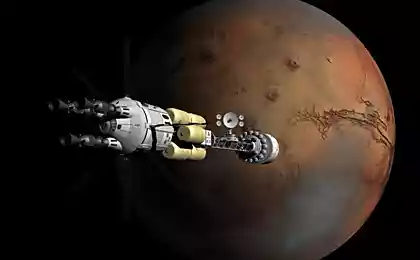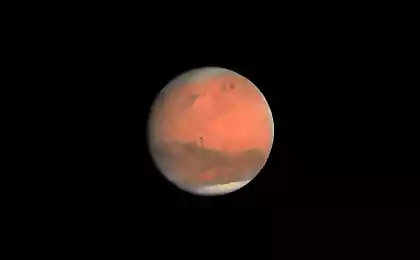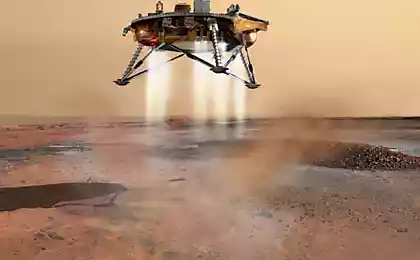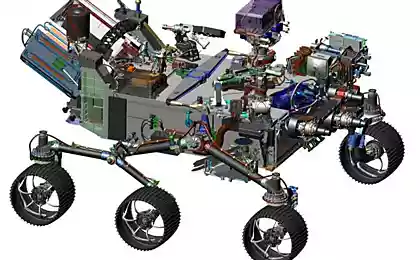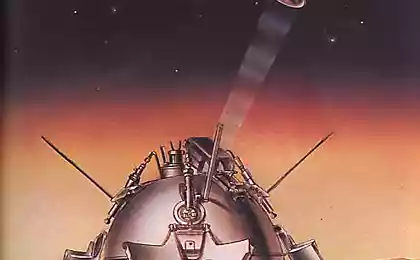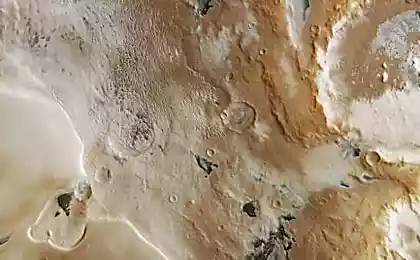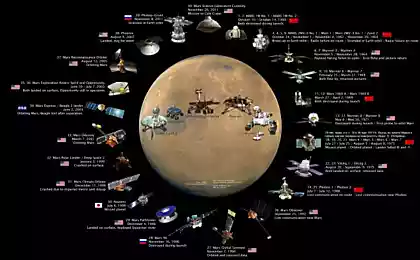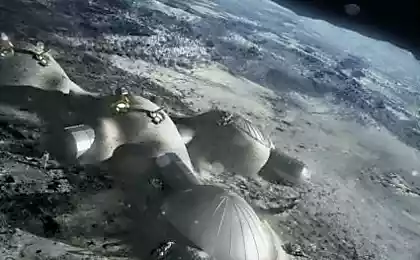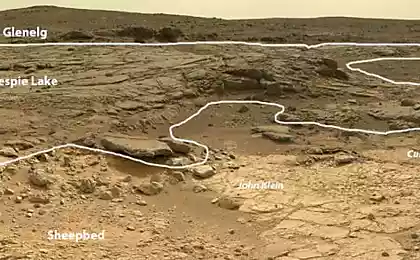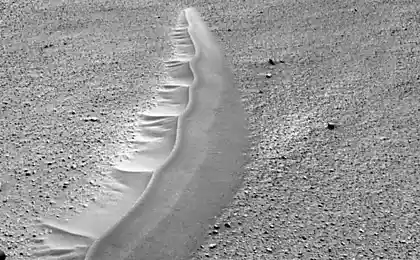970
The second riddle of Mars
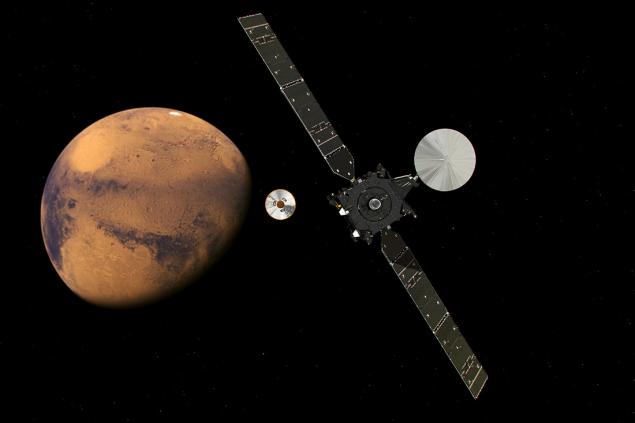
Today at 12:31 will start from Baikonur rocket "Proton-M" which will send to Mars spacecraft international research mission ExoMars. See the start will be on Yandex, which will begin at 11:45 broadcast from the studio of Roscosmos. Yandex has asked me to tell you more about the planned mission and its objectives.
Everyone knows that no one knows there is / was there life on Mars. This is the first mystery. Fifteen years ago, the second mystery was water on Mars. Now it has been repeatedly solved - water found, mapped the, examined the surface. But by the time the riddle found no less important - Martian methane
. Methane - is a simple organic compound with one carbon atom and four - hydrogen. Methane takes a big role in the life of mankind on Earth, because it is the main component of natural gas. all hydrocarbons called organic, but not all apply to organisms. However, it is now believed that up to 90% of Earth's methane, including those stored in the bowels of a biological origin. At the same time, in space it too much. Methane recorded on comets in Jupiter's atmosphere, methane takes a mass equal to the three planets of Earth and Saturn's Titan moon flowing methane in the icy banks of the river.
In 2003, astronomers reported the sensational news - Mars, methane was found. Moreover, it has not been uniformly "smeared" throughout the atmosphere, and clearly gravitated to certain parts of the planet. Its concentration was rather insignificant: from 250 to 10 parts per billion, according to various estimates. The total releases in spring 2003 corresponded to approximately 42 thousand. Tons of gas, for comparison, is about one-third are not very large LNG carriers. Those. "Gazprom" interested in such stocks could not, but very excited the scientific world.
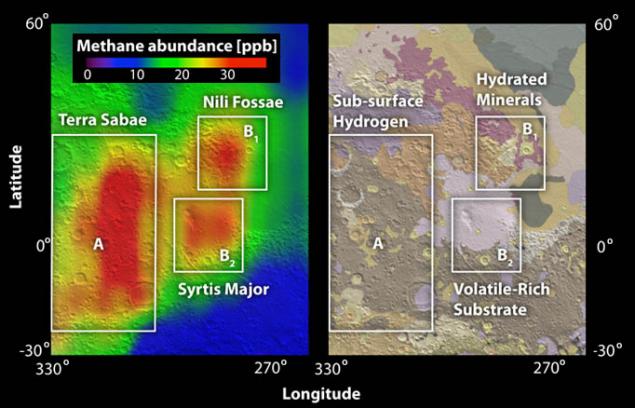
Methane emissions are registered at the same time, US and Russian astronomers, and a year later, these findings were confirmed with the Martian orbit of Mars Express satellite, ie, error could not be. So researchers had to find the answer where it came from. Explain all too tempting Martian life, but not convincingly. Methane can be a result of geophysical activity of the Martian subsurface, can be produced in some reactions of oxidation of iron ... Definitely you could say that is methane present, in geological terms, since by solar ultraviolet light breaks down organic matter in the atmosphere for several hundred years.
While scientists thought came from the methane on Mars, it's gone. That is almost exactly. Not dispersed in the atmosphere, up to a certain average value, and simply disappeared, leaving a very very insignificant concentrations which barely registered available on the day instruments.
Scientists have accepted the challenge, and by 2012 have equipped the rover Curiosity, which is equipped with a sensitive gas analyzer capable of detecting methane atmosphere. The truth is not sent it to where methane emissions observed since principal in the project geologists were, and they have found their targets in the crater Gale.
Successfully landed, and getting used to the Curiosity Mars spent the first research and found that there was no methane. More precisely not that concentration that was available its instruments. Astronomers on Earth virtually confirmed his results - methane and the truth was quite small, at the limit of resolution of the terrestrial spectrometers
. So far, researchers have speculated about Martian methane Schrödinger was a year and Curiosity has sent new data - a mysterious gas again appeared in the crater Gale ... And then disappeared again
.
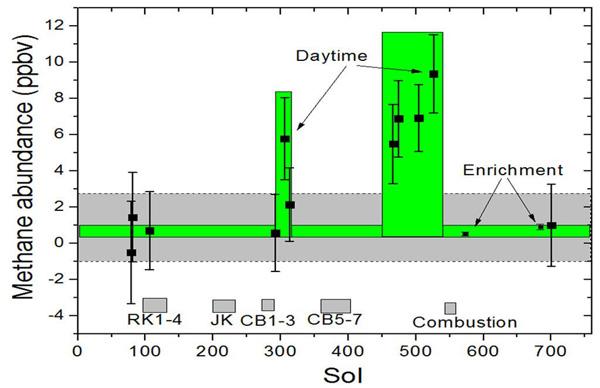
While US scientists have tried to search out the methane from telescopes on Earth, and chased them to the rover, European and Russian planetary scientists have decided to take up the case on his own. Having vast experience Mars Express and Venus Express spacecraft joint operation, and significantly refined the research instruments, they decided to look for Martian methane from orbit. As already mentioned, Mars Express has registered methane, but its resolution on the distribution of atmospheric gases, left much to be desired. With experience, the Russians and the Europeans have decided to prepare a machine that can look Methane with an accuracy of less than a thousand times greater than the possibility of Mars Express. Thus was born the idea of a spacecraft ExoMars Trace Gas Orbiter.
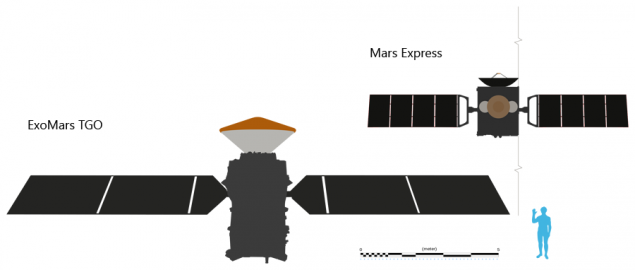
To be more precise idea of the Europeans appeared long ago, but she was going through the difficult fate, while the European Space Agency has not signed the 2013 agreement with Roscosmos.
Cooperation on "exomars" is based on the principles already spent on the "Express": Russia pledged to provide two rocket "Proton-M" for the launch of the satellite and rover, and devices will be installed Russian scientific instruments, together with the European. The first flight leaves Trace Gas Orbiter satellite. He must discard a test descent module Schiaparelli, and then for several years engaged in solving a puzzle methane. At the same time he will be able to determine low concentrations of other gases in the Martian atmosphere, if they are there. For example, if the local volcanoes are not quite zakameneli, and even a little trickle volcanic gases, TGO should find these gases and to identify their sources.
Generally, if the previous decade has been devoted to studying the geology of Mars, both in orbit and on the surface, then now is "atmospheric" stage. Two years ago, Mars MAVEN profit American unit, and the Indian Mars Orbiter. NASA device is clearly sharpened by the study of the atmosphere and the magnetosphere of Mars, but he is engaged in the upper layers, and their interaction with the cosmic wind. Those. MAVEN is to answer the question of how Mars lost its atmosphere, while the ExoMars TGO will look for possible sources of its replenishment from the bowels of the planet.
Indian scientists are also interested in the issue of methane, and even outfitted a separate device to search for it, but so far only tested it. And we should understand that he is unlikely to show the quality is higher than that of Mars Express. Still, the Indians sensibly evaluate their capabilities in interplanetary research and stressed the importance of a demonstration of his device.
ExoMars TGO - is a three-meter four-ton comic device, which carries a 600 pound "flying saucer" Schiaparelli and four main scientific instrument
.

Schiaparelli Europeans need to learn how to land on Mars. Previously, they had a bad experience landing in 2003. As it turned out, the Beagle-2 probe still managed to sit down gently, but stopped work and not leaving the relationship. Now, ESA will try to repeat the experience on a higher level: the unit packed with sensors that will collect a lot of information during descent and landing
.
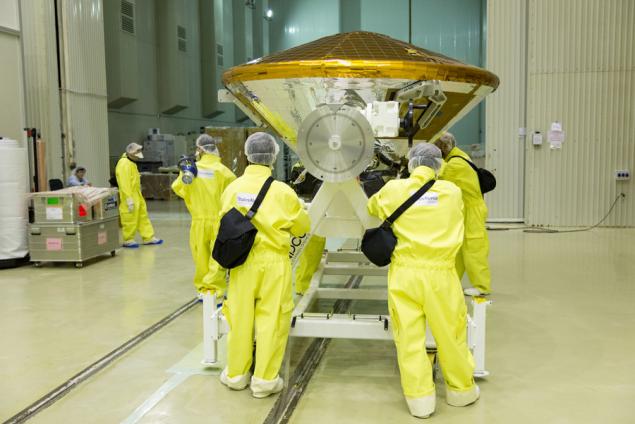
The next stage of ExoMars project - land rover, assumes Roscosmos, so Schiaparelli - it touched on the very very distant future. Although, in some reservations, it is clear that Europe then lifts his on a new ambitious goal - shipping soil from Mars
.

At Schiaparelli will climate research station, but it will last only a week - until they sit down batteries. Long-term power supply is not provided on the machine. One curious detail of the device - Laser corner reflector
.

Satellite ExoMars TGO is not equipped with a laser, so the corner reflector Schiaparelli just remains for the future. Perhaps it will even try to shoot from the Earth. Another interesting place in Schiaparelli landing - plain Meridian
.
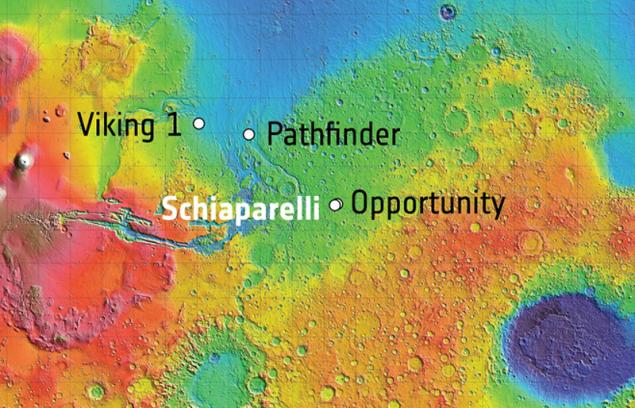
It is already working rover Opportunity landing and this is the closest convergence of the two Mars landers. Despite the "closeness" of their real will share hundreds of kilometers, so Oppy not be able to say hello to Schippy personally, at best, will try to observe the landing, although it is unlikely to see something from a distance.
Two major scientific instrument ExoMars TGO: European and Russian NOMAD ACS blocks are several spectrometers and partially complementary to each other, but capture different ranges of light waves. That they have the primary task of the mission - mapping the Martian atmosphere gas
.
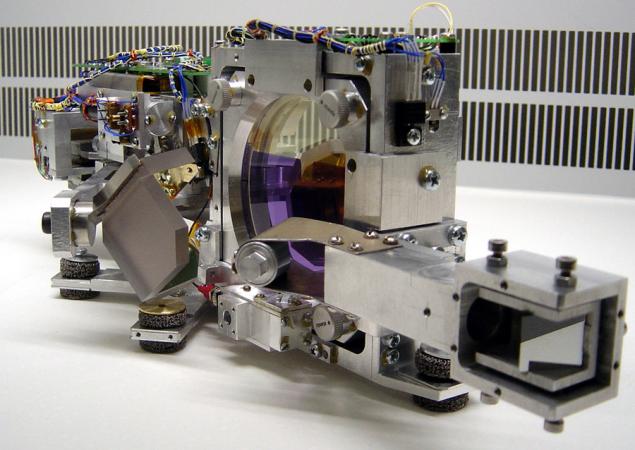
Both will use a "secret method" - to observe the atmosphere in the gap. Those. analyze the light of the sun, plunging into the atmosphere of Mars on the horizon. This method, and high spectral resolution of the instrument makes it possible not only to determine gases in the atmosphere, but even distinguish their isotopic composition. And this is a key indicator, which in theory would allow to distinguish the biogenic gas from geological emissions. The difference - in the atomic weight of carbon
. On Earth, life prefers to allocate methane with light isotope C12, as it is easier to communicate with hydrogen as a result of biochemical processes. The geological processes are not selective because, in C12 and C13 are methane formed in approximately equal proportions. Besides methane, the biological activity may indicate ammonia which is released in the same way as a result of living organisms life. While ammonia on Mars found but if it is a little in the atmosphere, it will find the TGO. Of course, scientists know only earthly life, and, in fact, looking for signs of it on Mars, but not for the estate alternatives have to "look where lighter." In his defense, they say that the laws of physics and chemistry on our planet work the same geological structure similar to, but once, and the conditions were similar, so there is no reason to believe that the evolution of matter from non-living to living took place in some other way.
By the way, it is not clear how in the world a process of passing the origin of life, and this, by the way, is an important argument in favor of the exploration of Mars. It would seem, why tumble hundreds of millions of dollars to find someone who has filled the gas on another planet? But in order - to understand how we are on our planet were a
. Already, few scientists seriously believe that we can be Martians settlers, in the form of bacteria to get on meteorites from Mars to Earth. Rather the reverse option - finding life on Mars, the local will have to prove that it is indeed a local, rather than flew from Earth. Still, Mars is a relatively independent laboratory, where the distance from the Earth could be carried out repeated natural experiment to create living matter, capable to understand ourselves, the world, the launch of the spacecraft and write posts.
In addition to optical spectrometers, TGO is on board yet CaSSIS camera that can shoot up to the surface with a resolution of 5 meters, and perform stereo area. Previous apparatus ESA Mars Express for many years has been their observation of the surface, and periodically pleases chic panoramas. Its resolution of 20 meters, that is, TGO pictures will cover a narrow strip area, but the details of the surface will be seen better. The pictures this camera will be used including the choice of the landing site of the future rover Paster, which should start in 2018 or in 2020, the year.
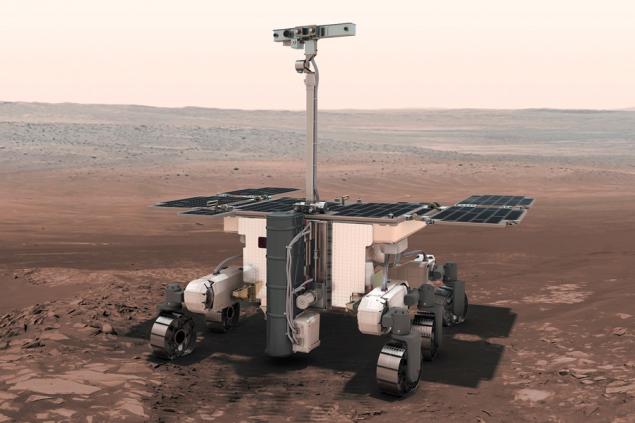
Unfortunately, CASSIS shots will not help us in the search for Mars-6, but try to see a little speck parachute "Mars-3". The truth is no one knows when the image is taken the desired site location.
The fourth device TGO Russia again - FREND neutron detector. His task - mapping of the water content in the soil of Mars to a depth of one meter
.
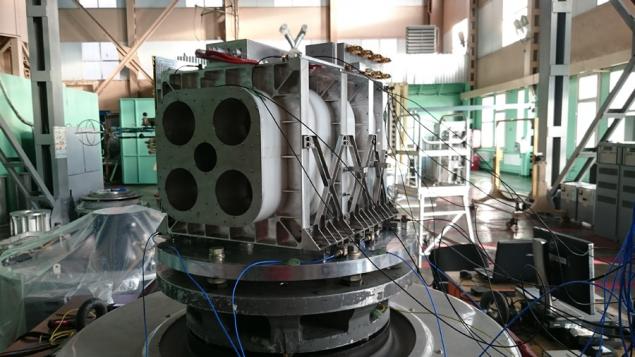
Such a device of the same Division of Nuclear Planetology Mars already flying, but its resolution is very low - in fact equal to the satellite's altitude
. Neutron detectors detect the neutrons that bombard the planet sun. Some neutrons "bounces" off the planet, after plunging into the ground a foot or so. The rate of return depending on whether they met with hydrogen in the ground. The more hydrogen, the slower neutrons are emitted. By recording the velocity of the neutrons can be determined how much hydrogen is hidden in the surface, and the most likely reservoir of the volatile gas - water ice. The previous generation of detector - HEND - flies in the American apparatus Mars Odyssey in 2001. Roughly it catches all the neutrons that are emitted from the surface regardless of the angle of reflection. Therefore, it is difficult to determine from which flew and water distribution maps that helped make HEND too small scale.
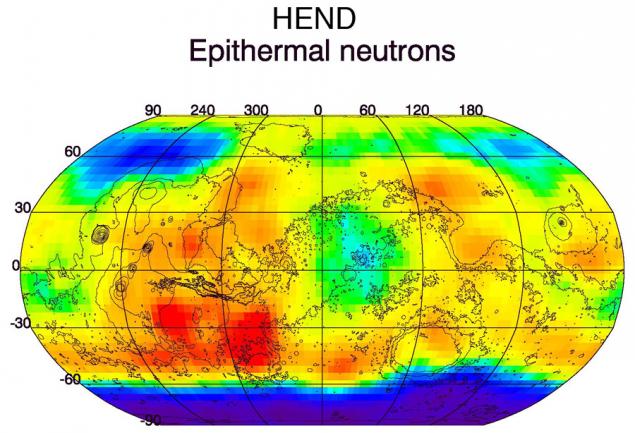
At the orbit of the moon on NASA LRO satellite tested the next generation of device - LEND. He already has a so-called "Collimator" - a mask that cuts off part of the neutrons, allowing them to take only a narrow portion of the area. This collimator create a stir in lunar geology - finding water where it should not be, so that there is certainly something interesting on Mars, it remains only to wait a few years until typed the necessary amount of data
. But the most important part of the mission - the start - we have to wait a couple of hours. Start is scheduled for today at 12:31 GMT
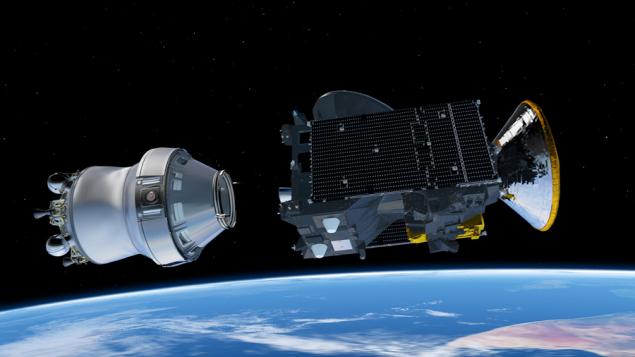
More information on the ExoMars project can be found on the website of the Institute of Space Research, or on the website of the European Space Agency.
Source: habrahabr.ru/company/yandex/blog/279175/
